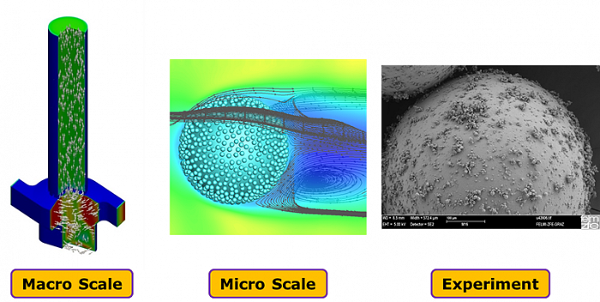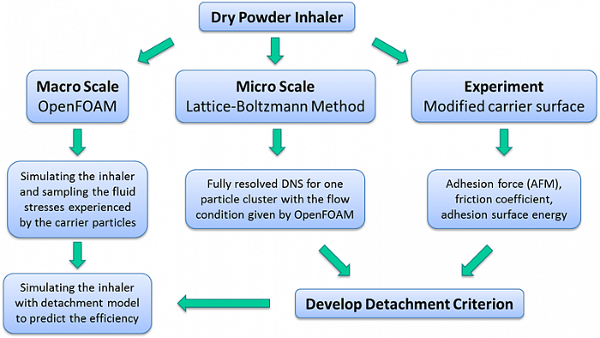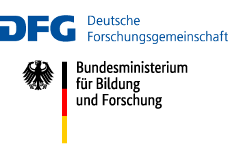Particle in Contact - Calculation of the detachment of fine particles (LBM 3D)
Grant number
SO 204/38-3
Procekt title
The importance of inter-particle interactions for the application of dry powder inhaler
Project leader
Prof. Dr.-Ing. habil. Martin Sommerfeld
Realized by
Partners
Prof. Dr. rer. nat Nora Urbanetz
Prof. Dr. rer. nat Hartwig Steckel
Keywords
Dry powder inhaler, lattice-Boltzmann method, computational fluid dynamics, multi-scale approach, prediction of drug detachment, grid generated turbulence, wall roughness, agglomerate-wall collision.
Short description of the project
Pulmonary drug delivery by dry powder inhalers is becoming more and more popular. Such an inhalation device must insure that during the inhalation process the drug powder is detached from the carrier due to fluid flow stresses. The goal of the project is the development of a drug powder detachment model to be used in numerical computations (CFD, computational fluid dynamics) of fluid flow and carrier particle motion through the inhaler and the resulting efficiency of drug delivery. This programme will be the basis for the optimisation of inhaler geometry and dry powder inhaler formulation. For this purpose a multi-scale approach is adopted. First the flow field through the inhaler is numerically calculated with OpenFOAM® and the flow stresses experienced by the carrier particles are recorded.

Photo 1: Fluid Flow Simulations
This information is used for micro-scale simulations using the Lattice-Boltzmann method where only one carrier particle covered with drug powder is placed in cubic flow domain and exposed to the relevant flow situations, e.g. plug and shear flow with different Reynolds numbers. Therefrom the fluid forces on the drug particles are obtained. In order to allow the determination of the drug particle detachment possibility by lift-off, sliding or rolling, also measurement by AFM (atomic force microscope) were conducted for different carrier particle surface structure. The contact properties, such as van der Waals force, friction coefficient and adhesion surface energy were used to determine from a force or moment balance (fluid forces versus contact forces) the detachment probability by the three mechanisms as a function of carrier particle Reynolds number. These results will be used for deriving the drug powder detachment model.

Photo 2: Dry Powder Inhaler Process Model
Publication in journals
Cui, Y., Schmalfuß, S., Zellnitz, S., Sommerfeld, M. and Urbanetz, N.: Towards the optimization and adaptation of dry powder inhalers. International Journal of Pharmaceutics (under review).
Published conference articles
Cui, Y., Schmalfuß, S. and Sommerfeld, M., 2013. On the detachment of fine drug powder from carrier particles within an inhaler device. Jeju, Korea, ICMF 2013.
Ernst, M., Dietzel, M., Cui, Y. and Sommerfeld, M., 2013. Lattice-Boltzmann simulations for analysing particle-scale phenomena. Jeju, Korea, ICMF 2013.
Cui, Y. and Sommerfeld, M., 2012. Forces on micron-sized particles randomly distributed on the surface of larger carrier particles. Friedrichshafen, Germany, CHoPS 2012.






